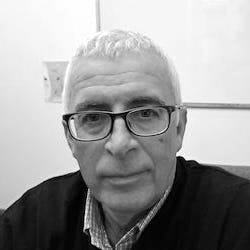Raffaele Di Santo

Ph.D XXXVIII
Supervisor: Anna Giordano Bruno, Dikran Dikranjan
Phone:
Room:
Mail: raffaele.disanto@uniud.it
Research Project
Functorial subgroups of topological abelian groups
An assignment of a subgroup r(G) for every topological abelian group G defines a functorial subgroup if for every continuous homomorphism f : G1 → G2 one has f(r(G1)) ≤ r(G2). Classical examples of functorial subgroups of purely topological nature are the connected component, the arc component and the quasi-component, respectively, of 0G.
This research project will be focused on functorial subgroups that reflect both the topological and the algebraic nature of the topological group. An important example in this direction is the subgroup tb(G) of topologically b-torsion elements of G, where b = (bn)n∈N0 is an increasing sequence of natural numbers, defined by
tb(G) = {x ∈ G : bnx → 0}
This definition was inspired by the work of Braconnier and Vilenkin in the late forties of the last century on the structure of locally compact abelian groups, as pointed out by Armacost. The subgroups tb(T) of the circle group T have been studied in Analysis, Descriptive Set Theory, Topology, Dynamical Systems and Number Theory. They were named Arbault sets in Harmonic Analysis in honour of J. Arbault who introduced them. More recently the term characterized subgroups (by a sequence) was coined by Bíró, J.-M. Deshouillers, V. Sós. Later the notion of characterized subgroup was extended to the case of compact abelian groups.
The characterized subgroups of T have remarkable properties: they are Fσδ-subsets and they are Polishable, i.e., admit a (necessarily unique) Polish group topology. When the sequence b satisfies bn | bn+1 for every n ∈ N, they can be completely described. All countable subgroups of T are characterized.
Using statistical convergence (rather than the usual one) statistically characterized subgroups of T were recently introduced.
My research project will be developed in the following possible directions:
- create a general (and possibly complete) picture of the results obtained so far in the field of characterized subgroups of T and more generally, of the compact abelian groups;
- clarify the connection between (statistically) characterized subgroups of T and the Weyl uniform distribution theorem;
- extend further the parallel between characterized subgroups of T and statistically characterized subgroups of T and carry out some new steps in the general case of compact abelian groups, where nothings is known so far;
- study general properties of the functorial subgroups of the compact abelian groups.